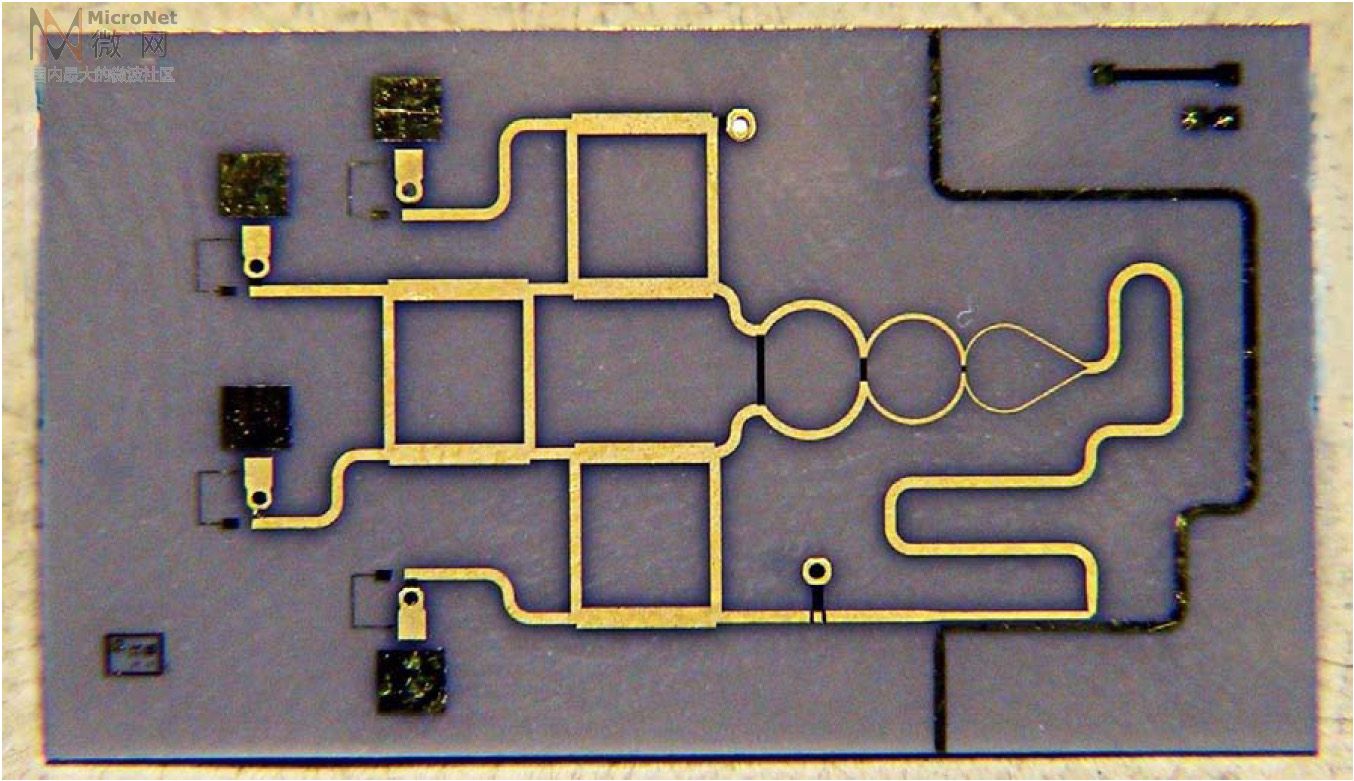
Chapter1 Introduction to the Six-Port Technique
1.1Microwave Network Theory ... 1
1.1.1Power and Reflection ... 1
1.1.2Scattering Parameters ... 3
1.2Microwave Circuits Design Technologies ... 6
1.2.1Microwave Transmission Lines ... 6
1.2.2Microwave Passive Circuits ... 7
1.2.3Fabrication Technologies ... 10
1.3Six-Port Circuits ... 13
1.3.1Microwave Network Measurements ... 13
1.3.2Wireless Applications... 16
1.3.3Microwave Applications ... 17
References... 18
Chapter2 Six-Port Fundamentals
2.1Analysis of Six-Port Reflectometers ... 2
2.2Linear Model ... 24
2.3Quadratic Model ... 26
2.4Six- to Four-Port Reduction ... 28
2.5Error Box Procedure Calculation ... 31
2.6Power Flow Measurements ... 32
2.7Six-Port Reflectometer with a Reference Port ... 33
2.8Measurement Accuracy Estimation ... 34
References... 36
Chapter3 The Design of Six Port Junctions
3.1Design Consideration for Six-Port Junctions ... 39
3.2Waveguide Six-Port Junctions ... 41
3.3Frequency Compensated Optimal Six-Port Junctions ... 43
3.4Frequency Compensated Quasi-Optimal Six-Port Junctions ... 49
3.5 A Six-Port Junction Based on aSymmetrical Five-Port Ring Junction ... 53
3.6High Power Six-Port Junction in Hybrid WaveGuide/Stripline Technology ... 58
3.7Worst-Case Error Estimation ... 59
References... 62
Chapter4 Calibration Techniques
4.1Calibration Method Using Seven Standards ... 65
4.2Linear Calibration Using Five Standards ... 67
4.3Nonlinear Calibration Using Four Standards ... 70
4.4Nonlinear Calibration Using Three Standards... 71
4.5Self-Calibration Based on Active Load Synthesis ... 79
4.6Dynamic Range Extension ... 81
4.7Diode Linearization Technique ... 84
4.8Power Calibration Technique ... 86
References... 88
Chapter5 Six-Port Network Analyzers
5.1General Formulation ... 91
5.2Case of a Reciprocal Two-Port DUT ... 93
5.3Case of an Arbitrary Two-Port DUT ... 94
5.4Six-Port Based De-Embedding Technique: Theory ... 96
5.5Two-Port De-Embedding Technique ... 99
5.6Calculation of the Error-Box Parameters ... 102
5.7Determination of S Parameters of an Arbitrary DUT ... 103
5.8Tri-Six-Port Network Analyzer ... 104
5.9N-Six-Port Network Analyzer ... 109
5.10A Single Six-Port N-Port Vector Network Analyzer ... 111
5.11N-Port Calibration Algorithm ... 113
References... 117
Chapter6 Source Pull and Load-Pull Measurements Using the Six-Port Technique
6.1Principles of Source-Pull/Load-Pull Measurements ... 119
6.2Impedance and Power Flow Measurements with an Arbitrary Test Port Impedance ...120
6.3Operation of a Six-Port in Reverse Configuration ... 122
6.3.1Six-Port Reflectometer Calibration in Reverse Configuration ... 124
6.3.2Error Box Calculation for Reverse Six-Port Measurements ... 127
6.3.3Discussion ... 128
6.4Source-Pull Configuration Using Six-Port ... 129
6.4.1Passive Source-Pull Configuration ... 129
6.4.2 Active Source-Pull Configuration ...130
6.5 Load-Pull Configuration UsingSix-Port ... 131
6.5.1 Passive Load-Pull Configuration... 131
6.5.2 Active Branch Load-PullConfiguration ... 133
6.5.3 Active Loop Load-PullConfiguration ... 134
6.6 Source-Pull/Load-PullConfiguration Using Six-Port ... 135
6.7 A De-Embedding Technique forOn-Wafer Load-Pull Measurements ... 136
6.7.1 Calibration and MeasurementTechniques ... 136
6.8 Applications of Source-PullMeasurements ... 139
6.8.1 Low Noise AmplifierCharacterization ... 139
6.8.2 Mixer Characterization ... 140
6.8.3 Power AmplifierCharacterization ... 141
6.9 Source-Pull/Load-Pull OscillatorMeasurements ... 142
6.9.1 Six-Port Reflectometer withVariable Test Port Impedance ... 143
6.9.2 Oscillator Measurements ... 143
6.10 AM-AM/AM-PM DistortionMeasurements of Microwave Transistors Using Active Load-Pull ... 145
6.10.1 Principle of Operation ... 145
6.10.2 Measurement Procedure ... 149
6.11 Time-Domain Wave-Correlator forPower Amplifier Characterization and Optimization ... 150
6.11.1 Time-Domain WaveformMeasurement ... 150
6.11.2 Multiharmonic Six-PortReflectometer ... 151
6.11.3 Time-Domain Voltage andCurrent Measurements ... 154
References ... 157
Chapter 7 Six-Port WirelessApplications
7.1 Multiport Transceiver ... 161
7.1.1 Multiport Modulator ... 161
7.1.2 Multiport Demodulator... 163
7.2 Six-Port Receiver ... 164
7.2.1 Five-Port Receiver ... 168
7.2.2 Noise in Six-Port Receiver ...171
7.2.3 Six-Port Receiver Calibration ...176
7.2.4 Six-Port Structure Bandwidth ...177
7.3 Six-Port in Software RadioApplications ... 178
7.3.1 Five-Port Structure in SoftwareDefined Radio Applications ... 180
7.4 Six-Port in UWB Applications ...182
7.4.1 Six-Port Impulse RadioModulator ... 183
7.4.2 Six-Port Impulse RadioDemodulator ... 184
7.4.3 Five-Port Receiver in UWB ...185
7.5 Six-Port in Millimeter-WaveRadios ... 188
7.6 Comparison Between Six-Port andConventional Receivers ... 192
7.6.1 RF Performance... 192
7.6.2Boundary Limitations ... 193
7.7Six-Port in Phased-Array Systems ... 193
References... 196
Chapter8 Six-Port Microwave Applications
8.1Six-Port Microwave Reflectometer ... 199
8.1.1Six-Port Reflectometer ... 199
8.2.1High Power Microwave Reflectometer ... 202
8.2Six-Port Wave-Correlator ... 203
8.2.1General Concept ... 203
8.2.2Calibration System ... 204
8.2.3Architecture of a Wave-Correlator ... 206
8.2.4Beam Direction Finder Using a Six-Port Wave-Correlator ... 206
8.2.5Doppler Estimation Using a Six-Port Wave-Correlator ... 207
8.3Six-Port Applications in Direction Finders ... 209
8.4Six-Port Applications in Radar... 213
8.4.1Six-Port Doppler Sensor ... 213
8.4.2Six-Port Range Sensor... 214
8.4.3Radar Structure ... 215
8.4.4Radar Calibration ... 216
8.5Antenna Measurement Using Six-Port ... 216
8.5.1Near-Field Antenna Measurement ... 216
8.5.2Polarization Measurement ... 218
8.6Material Characterization Using Six-Port ... 220
8.6.1Measurement System ... 220
8.6.2Probe Model Analysis ... 220
8.6.3Probe Calibration ... 223
8.7Optical Measurement Using Six-Port ... 223
8.7.1Optical Six-Port Junction Design ... 224
8.7.2Optical Six-Port Analysis ... 226
References... 228
Aboutthe Authors ... 231
Index … 233
 The Six-Port Technique 2009.rar (3.43 MB)
The Six-Port Technique 2009.rar (3.43 MB)